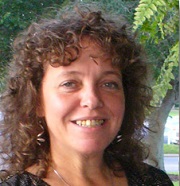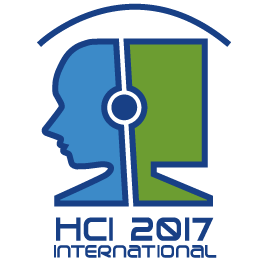Vancouver, Canada, 9 - 14 July 2017
Vancouver Convention Centre
Sunday, 9 July 2017, 13:30 – 17:30
Eileen Smith
University of Central Florida, United States
Patricia Bockelman
University of Central Florida, United States
Michael Carney
University of Central Florida, United States
Cali M. Fidopiastis
Design Interactive, United States
This tutorial session builds on the Multimodal Technology Training tutorial presented at HCI 2016. In this expansion, participants will receive information about the cutting-edge fields of high-tech simulation and brain based learning as it is applied to real world applications. This tutorial specifically introduces the participant to interactive training paradigms, brain based efficacy measures, and instructional design that provides a means to accelerate learning. Participants work actively work through a series of training scenarios using both roundtable and large group format. The format of the tutorial will allow participants to identify, discuss and reflect on incorporating multiple modalities of technologies into raising the effectiveness of training scenarios presented. After the half-day timetable, tutorial participants will co-create several draft training modules/programs with the main goal of demonstrating how to incorporate various modalities to enhance learner outcomes.
Content:
The tutorial leaders will present overviews on training technology, interactive simulation, metrics, and instructional design that will focus on how to design, develop, and deliver accelerated learning trainings. The participants will be able to work in groups to practice the application of these integrated tools and will begin the journey of discovering each modalities’ role in successful learning. Scheduled “report-backs” from each breakout group will be used to discover commonalities, and outlier issues, as each group creates a blended learning training program. Each break out session teams will go through an entire iteration of design, develop and deliver to a attain a minimal viable product each breakout period.
This tutorial session is designed to result in the creation of several draft training programs during the half-day timetable, demonstrating to participants how to move from theory into practice with scaffolding learners.
Session timeline:
- Introductory remarks by instructors
- Initial breakout session - Identify performance issues, subjects and environment
- reason for choice
- initial concepts for final training program
- Initial reports back from discussion groups
- 2nd breakout session - Identify technology alternatives
- reason for choice
- concepts for technology usage
- reports back from discussion groups
- 3rd breakout session - Design intervention strategy for training program
- how each links to the others in a blended learning structure
- how each step would be measured and assessed
- Final breakout session - Develop technology intervention roadmap for training program
- how specifically would this intervention raise the desired performance
Target Audience:
Students learning human factors and user experience, instructional designers, service training providers, industry and commercial entities needing training that requires more interaction and realism
Bio Sketch of Presenters:




She has 15 years of experience in designing and assessing simulation-based training and rehabilitation tools for civilian, commercial, and military applications. She studies brain plasticity and its relationship to learning and training using simulated and real world training tools. This work includes creating interactive simulated people, places, and things to assess user performance both behaviorally and cognitively. Her main research interests include: 1) Human Factors testing of user interfaces; 2) developing metrics for assessing human interaction with autonomous agents; 3) evaluating neuroeducation strategies for accelerated learning, and 4) designing human-centered enabling technologies. Integral to this work is creating novel quantitative, objective measures using psychophysiological sensors (e.g., eye tracking and electrodermal response) to assess cognitive workload, focused attention, and emotional stress. Her work spans both DOD and civilian applications, turning the research into products to augment quality of life and work performance.


